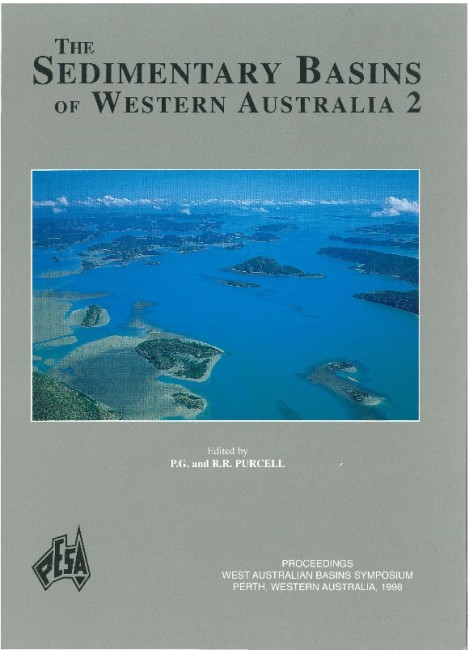Publication Name: The Sedimentary Basins of WA
Authors: J. E. Blevin, C. J. Boreham, R. E. Summons, H. I. M. Struckmeyer and T. S. Loutit
Publication Volume: 2
Date Published: December 1998
Number of Pages: 35
Reference Type: Book Section
Abstract:
Recent discoveries at Cornea 1 and Gwydion 1 on the southeastern margin of the Browse Basin (Yampi Shelf) have highlighted the potential for liquid hydrocarbon generation in what was previously perceived to be a gas-prone basin. As part of AGSO's Browse Basin Project, geochemical analysis were undertaken on eleven oil samples/stains and forty seven source rock intervals ranging in age from Permian to Late Cretaceous. These data, together with previous analyses from The Oils of Western Australia study (AGSO and GeoMark Research, 1996), formed the basis of intra- and inter-basin oil-oil and oil-source rock correlations.The intra-basin oil-oil correlation identified two distinct oil populations in the Browse Basin: Population A (Cornea 1, Gwydion 1, Caswell 2 and Kalyptea 1/ST1) and Population B (Scott Reef 1, North Scott Reef 1 and Brecknock 1). A subset of Population A was also recognised (A2/Kalyptea 1/ST1) and probably reflects variations in organic facies richness and depositional environment. Population A oils have been correlated to Valanginian (S. areolata) and Barremian (lower M. australis) marine source rocks at Discorbis 1, Caswell 2 and Kalyptea 1/STl. These correlations form the basis of an effective Lower Cretaceous petroleum system in the Browse Basin
(Westralian W3 Petroleum System).
The Lower Cretaceous source rocks were deposited as pods of sediment along the distal margins of northerly-prograding successions of marine shale. Deposition, burial and maturation of source rocks were controlled by coeval events of increased tectonic subsidence caused by lower crustal thinning and higher sea levels during the mid-Valanginian and early Barremian. Maturation of the Lower Cretaceous succession was driven by a thick overburden of Aptian to Turonian shale and Campanian to Maastrichtian fans in the central Caswell Sub-basin. The onset of generation in the central basin during the Late Cretaceous resulted in multiple phases of expulsion.
Population B consists of light oils that were generated from marine source rocks containing a high terrestrial organic matter content. These oils did not correlate with the suite of source rocks sampled. While the inter-basin oil-oil correlation has shown that Population B is not closely related to oils of the Westralian Petroleum System, a comparison of pristane to phytane ratios suggest there may be some affinity to oils of Westralian Systems W1, W2D and W2B (Summons et al., 1998). Further work is required before Population B can be recognised as a new
petroleum system, or as a possible variant to an existing Westralian system.


